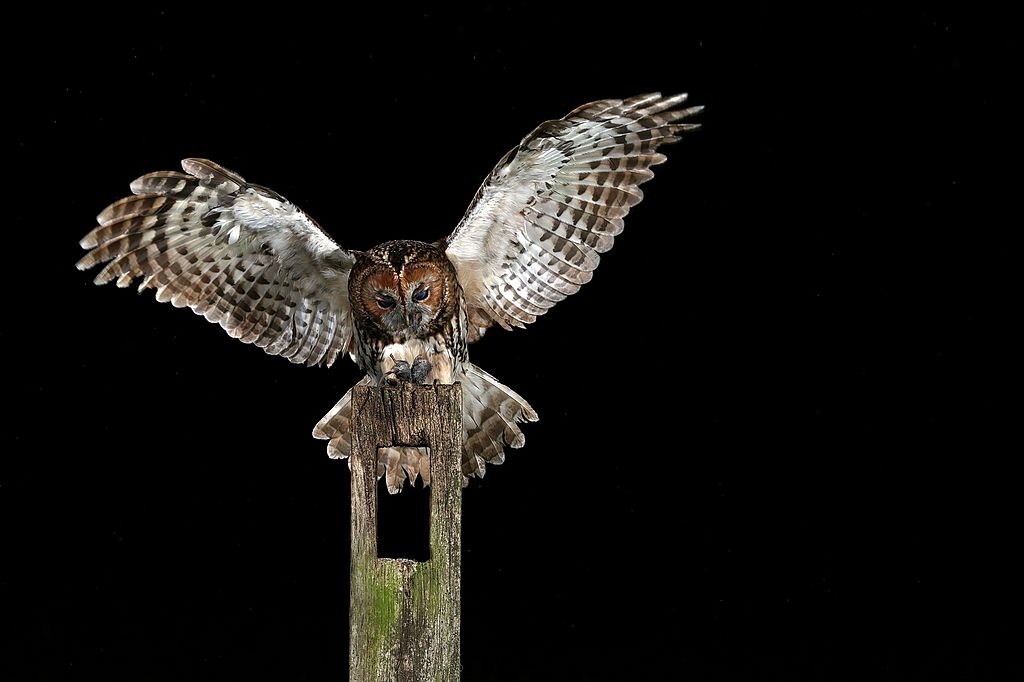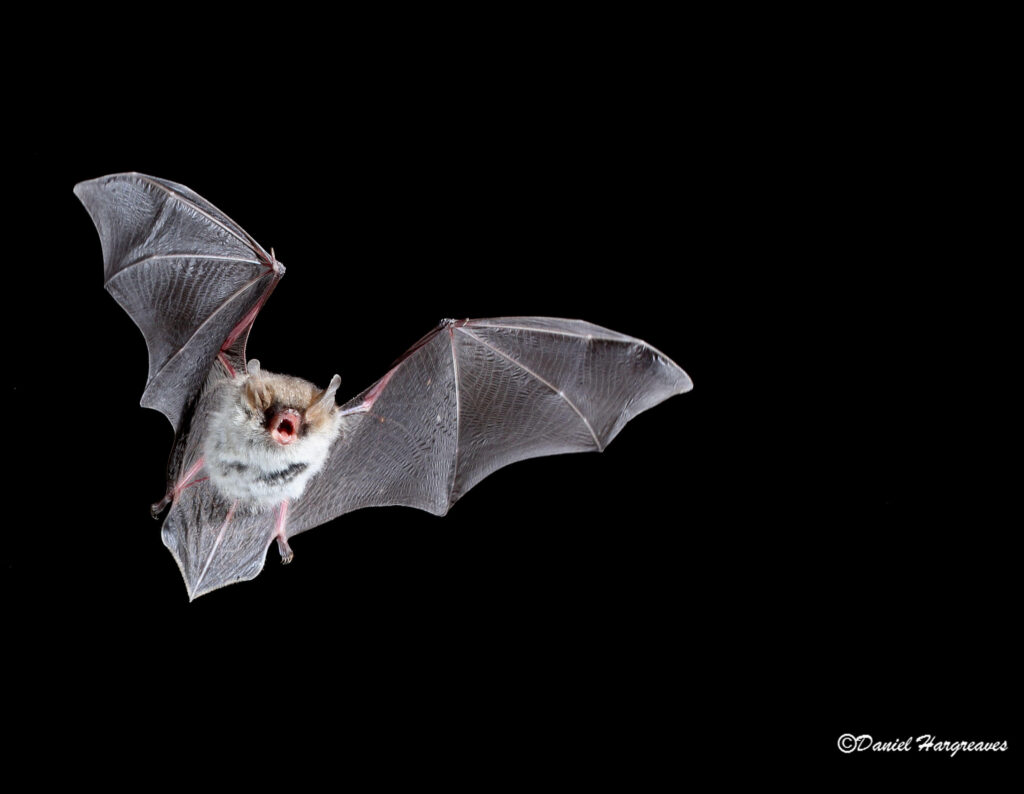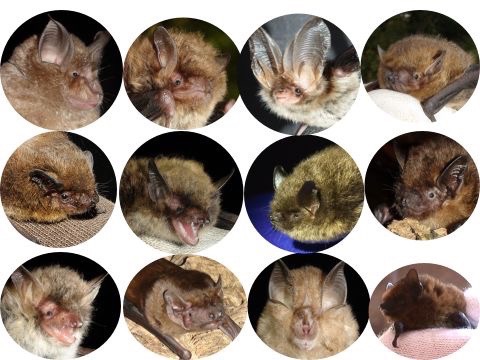Lights out for the creatures of the night
- 3 March 2022
-
 Meriel Harrison
Meriel Harrison
- Bats
Spring is on its way and the days are getting longer – but this month we’re focused on the night-time, with a look at why dark skies are so important for nature.

Gazing up at a starlit sky is a truly magical experience that we should all be able to enjoy. But getting a clear view depends on having dark skies, and currently it is estimated that at least 55% of the UK population are unable to see the Milky Way due to light pollution. Globally, artificial lighting has been increasing by around 6% year on year, and even in fairly rural areas such as ours we are affected by sky glow from the nearby towns and cities.
Scientists are studying the effect all this artificial light has and are finding clear impacts on animal life cycles and behaviours, including for many of the insects, bats and birds that are found in our local area of Yatton and Congresbury.
Insects
The total abundance of moths in the UK has decreased by one third over the past 50 years, and a landmark study published last year suggested that street lighting may be playing a significant role in this. By counting moth caterpillars in hedgerows and grass verges beneath street lights, researchers found that caterpillar numbers were up to 50% lower in lit areas – and that ‘eco friendly’ bright white LED bulbs were even more harmful than traditional sodium lights. Adult moths are attracted to lights, making them more vulnerable to predators and meaning they are less likely to successfully mate and lay eggs.
Glow-worms – in fact, a type of beetle – rely on dark skies for breeding success. The females climb up tall grass stems and produce a bright bioluminescent glow to attract males to mate with them, and there is evidence that even very low levels of light pollution have a negative effect on their success. This may be an important factor in the continuing decline of glow-worms across Britain. This decline has also been observed locally, with only very small populations of glow-worms known to be clinging on around Cadbury Hill and the Congresbury section of the Strawberry Line.

Bats
We are lucky to be on the doorstep of the North Somerset and Mendip Special Area of Conservation for bats, and many different bat species commute and forage around Yatton and Congresbury. Artificial light can affect these behaviours in a number of ways.
Lighting near bat roosts can delay their emergence, meaning they miss the peak time for insect hunting which is just after dusk. Lighting also concentrates the available insect prey who are attracted towards it, which has led to some bats opportunistically hunting under streetlights. While this may seem like an advantage for the bats, it puts them at greater risk from predators – and because lighting is bad news for flying insect populations, in the long term the bats may have less food. Some bat species, for example the Greater and Lesser Horseshoe bats, are more cautious and will avoid lit areas altogether, and so street lighting can become a barrier to their commuting behaviour.

Birds
Artificial lighting in cities is known to have significant impacts for migrating birds at night, including disorienting them which leads to fatal collisions with tall buildings. While we don’t have many skyscrapers around these parts, there is evidence that lighting also has other impacts on the daily rhythms and behaviours of many birds. A study of tawny owls, for example, found that light pollution had a strong negative influence on owl occupancy, and suggested this was probably due to their small mammal prey avoiding lighter areas. With caterpillars providing an important food source for many birds, the fact that street lighting reduces moth caterpillar numbers will also have knock-on effects for bird populations.
What can we do to protect our dark skies?
Reducing light pollution will need action at both individual and community level, and the good news is that there is agreement from experts on the simple steps we can take:
- Light only what is needed, when it is needed
Save lighting for those area where it is really necessary, such as front doors and steps or trip hazards, rather than lighting up your garden – and ensure security lights don’t spill over into neighbouring properties . Using motion sensors and lights that time out will also help minimise the impact, saving energy and preserving darkness,
- Keep focused and avoid spills
Using lighting fixtures with baffles or cones means that the light beams are focused in the direction where they are needed, rather than spilling out and contributing to sky glow. Another easy way to reduce light spill is to always close your blinds or curtains after dark, and this will also help conserve heat energy too.
- Choose your bulbs with care
Consider the brightness of your bulbs and opt for the minimum brightness that will still fulfil the function. Blue and UV light have more detrimental impacts on wildlife and sky glow, so choose warm LED lighting wherever possible. Worcestershire County Council is now installing ‘bat friendly’ red street lighting in some areas after finding that white LED lighting can have negative effects for some bat species.
You can help contribute to greater understanding of light pollution levels by taking part in the CPRE Star Count 2022 which is running from 26th February to 6th March. This is a fun and simple survey that involves picking an evening when the weather forecast is clear, and going outside to count the stars that you can see within the constellation of Orion. The results help CPRE to monitor where the skies are darkest, and which places are most affected by light pollution.
Our closest International Dark Sky Reserve is Exmoor National Park, making it a great place to visit if you want to do some serious stargazing. There are guides and trails available, and a Dark Skies Festival will be taking place from 13th to 30th October 2022.
For more information on the impacts of light pollution and how these can be reduced, the Devon Local Nature Partnership has developed a fantastic suite of dark skies resources to inspire action in communities.
© Copyright YACWAG, or original authors. All rights reserved. | Registered charity 1076362 | Privacy policy | Cookie policy | Terms & Conditions |Web design: StanfordGraphics


